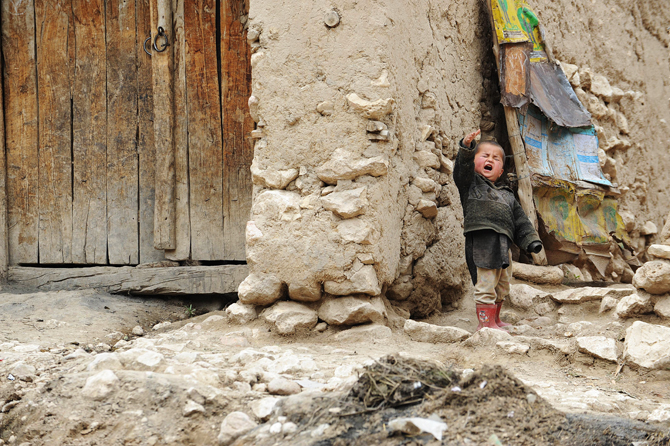2019 Afghanistan Humanitarian Needs Overview; 6.3m in need of assistance: UN
admin
December 7, 2018
Latest Updates, Nation
418 Views
Now entering the 18th year of crisis, humanitarian needs in Afghanistan show no signs of abating. A chaotic and unpredictable security situation, combined with a severe drought, have prompted an almost doubling in the number of people in need compared to this time last year, newly displacing more than 550,000 civilians and pushing 3.3 million into emergency levels of food insecurity. Today, 6.3 million people require some form of humanitarian and protection assistance including 3.7 million in severe and major need due to a convergence of factors arising from exposure to escalating violence, forced displacement, the loss of essential livelihoods and limited access to basic services.
Humanitarian Drivers
Armed Conflict & Protection of Civilians Decades of conflict have trapped Afghan civilians in a pervasive protection crisis.
Ongoing hostilities across large parts of the country, including ground engagements, aerial operations, and an indiscriminate use of improvised explosive devices (IEDs) are causing extreme levels of physical and psychological harm. Already this year, 98 suicide attacks have taken place, while quarterly trends indicate that 2018 is on track to be the fifth consecutive year in which civilian casualties exceed 10,000. Additional systematic violations of international humanitarian law (IHL) and international human rights law (IHRL) continue to be reported, mainly by non-state armed groups (NSAGs), ranging from attacks on health and education facilities to targeted killings, and the forced recruitment of children. Fighting creates both an immediate and long-lasting burden for civilians, exposing them to sudden and terrifying violence and leaving them vulnerable to unexploded ordnance, both of which generate significant trauma-related needs. In 2019, it is estimated that as many as 250,000 Afghans will require emergency medical treatment as a result of continued conflict, while nearly 1.8 million people live within one kilometre of areas known to be polluted with explosive hazards that are in need of immediate mine clearance.
Population Movement & Forced Displacement
Political instability, natural disasters, food insecurity and poverty continue to conspire to generate significant numbers of people on the move. So far in 2018, some 550,000 Afghans have been forced to leave their homes either due to conflict or the loss of livelihoods associated with drought.4 While returns from Pakistan are at an all-time low, with only 43,000 recorded so far in 2018, an unprecedented 673,000 Afghans have come back from Iran, many of them under duress.5 Populations forcibly displaced, internally or cross-border, are exposed to a host of protection risks both pre- and post-flight, including insecure tenure, and secondary and multiple displacement. With conflict, further economic decline in Iran and an uncertain political and protection climate in Pakistan all foreseen in 2019, it is estimated that one million displaced people will require lifesaving humanitarian assistance across multiple sectors.
Slow & Sudden-Onset Natural Disasters
In 2018 drought has affected more than two-thirds of Afghanistan, devastating the agricultural sector and leaving some four million people across the worst-affected provinces in need of life-saving assistance, including 3.9 million people in need of food and livelihoods support. The drought has unleashed a host of problems on already impoverished communities, reducing incomes by half, debilitating people’s health and causing households to engage in negative coping mechanisms – all of which have had an adverse impact on their physical and psychological well-being. As of November 2018, some 3.3 million people are experiencing Emergency levels of food insecurity (Integrated Phase Classification – IPC 47), a 74 per cent increase on this time last year, and require responses which help them to protect their assets and livelihoods from further depletion, as well as support their re-establishment. An additional 150,000 people are estimated to be in need of humanitarian assistance due to other sudden-onset disasters, including avalanches, landslides and flash floods. In 2019, floods may be more ruinous in their consequences due to the current drought conditions and the predicted El Niño weather pattern which is projected to bring higher than normal precipitation next year.
Access to Basic Services
Active conflict, large-scale population movements, and limited livelihood options continue to disrupt and deprive people of access to essential services, particularly health and education. Already in 2018, around 4,000 hours of healthcare delivery have been lost and 335,000 consultations missed due to the forced closure and destruction of health facilities, as attacks against health workers and medical assets mount in both frequency and deadliness. While limited access to essential services affects all members of the population, internally displaced people (IDPs) and returnees are particularly disenfranchised due to either their loss or lack of appropriate civil documentation. Across the country, other development indicators remain stubbornly low and, in some cases, are declining: in two thirds of Afghanistan’s provinces, the prevalence of global acute malnutrition (GAM) is above emergency thresholds; one in three Afghan children are unimmunised; and ongoing conflict continues to hamper maternal and child health, particularly in rural areas where some 75 per cent of women live. With continued insecurity expected in 2019, it is estimated that some 2.64 million people will require humanitarian assistance due to limited access to services, including 1.9 million malnourished children and nursing mothers. In addition, the use of some 4,500 schools, as well as other civilian infrastructure, as voter registration and polling centres in the presidential elections slated for April 2019, may also make these facilities targets for attack, subjecting them to actual violence or damage, or leading parents to keep children away from school and requiring preventative and protective measures to be put in place.


